Building a House Boat (2010)
Designing, constructing, and living aboard a houseboat.
The Landlord Independent was a 40ft houseboat that was envisioned and created on the belief that the maritime environment is the ideal home for a sustainable artist community. In the spring of 2009, Zachary Weindel and I began a design process focused on repurposing disregarded materials for use in building our boat.
The collaborative process of imagining, planning, and building this vessel demanded that I learn new methods for managing a range of essential and unusual tasks. Building this boat taught me a great deal about the joys and challenges of managing multifaceted projects. The boats distinct phases of construction and the media coverage we garnered are documented here.
Life Aboard











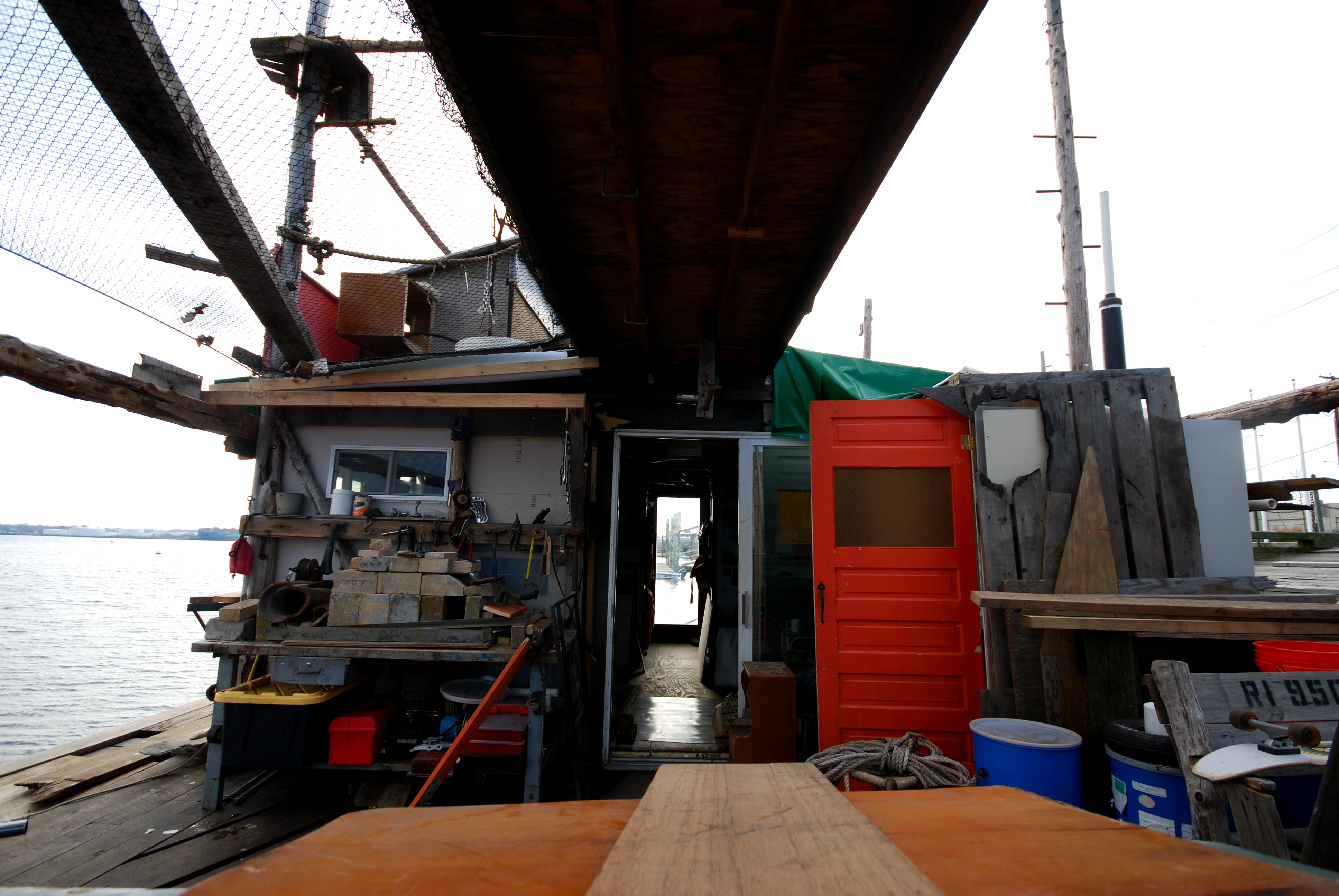





Living on the Landlord Independent provided a unique juxtaposition between a life in the city and home on the frontier. The boat found restage in the many hidden and beautiful oases which fill the waterways of Providence, Rhode Island. Doing without some domestic comforts seemed inconsequential when surrounded by the magnitude and beauty of the outside environment.
On board, summertime cookouts were a common occurrence with a revolving cast of friends, family, fishermen, and people from the community. All through the changing seasons of New England we would move the boat between a variety of more or less rural anchorages. Along the way, the houseboat drew the interests of spectators, friends, foes and allies. Opinions on the boat varied from eyesore to masterpiece.
Unequivocal among the Landlord Independent’s characteristics was the combined forward force of Zach and myself. It is a force defined by our unmatched ability to imagine, plan, and then build our own reality.
Building the Cabin














Cabin Materials
The framework of the boat’s cabin was built from of local cedar trees. On top of this framework a roof was constructed from foam panels that had been salvaged from a demolished ice warehouse. The walls were built from similar foam panels donated by a materials testing facility. Firebricks from the site of a former industrial furnace were used to build the boat’s wood stove.
Electrical System
The boat’s electric system included LED lights, a radio, and phone chargers. These light duty appliances drew power from three 12-volt deep cycle batteries wired in series. A wind turbine mounted with a custom charge controller was installed to keep this system charged.
The Vessel’s Anchor
The enormous surface area of the boat required an anchor with exceptional holding power. A custom anchor was welded from scraps of structural steel for this purpose.
Waste Treatment
A composting toilet was used for the treatment of waste. The contents of the toilet would quickly decompose for safe and environmental disposal on land.
Building the Deck
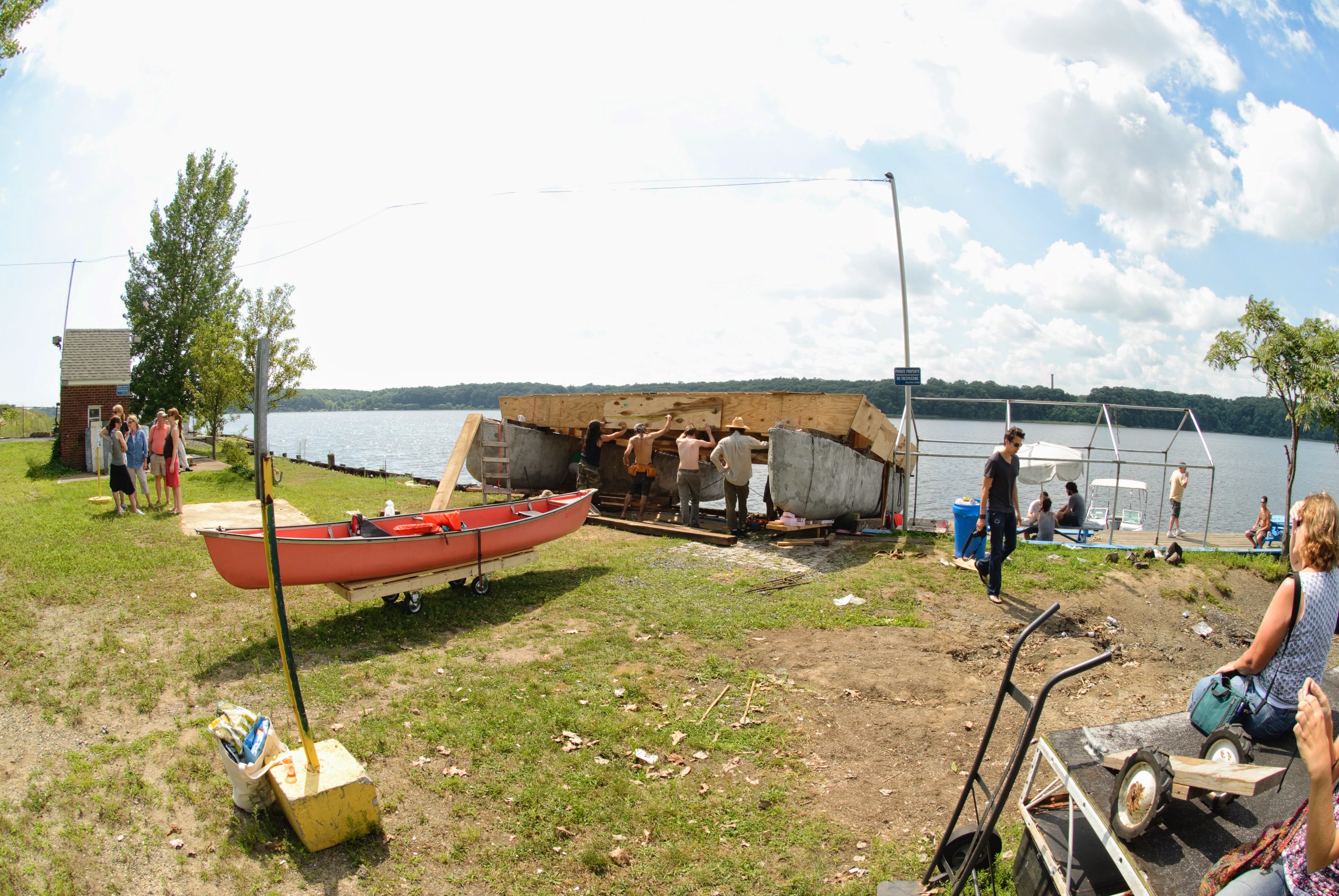
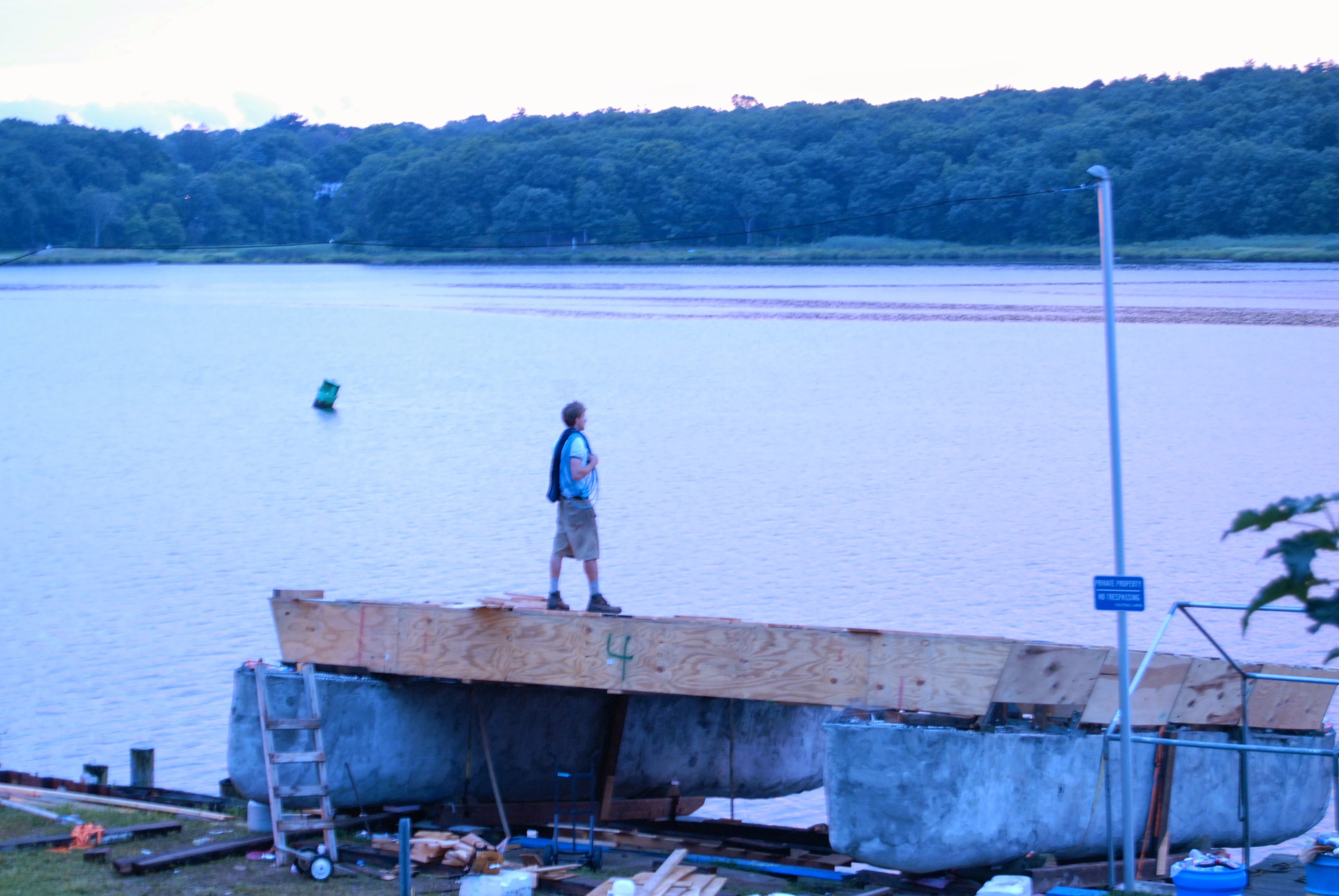





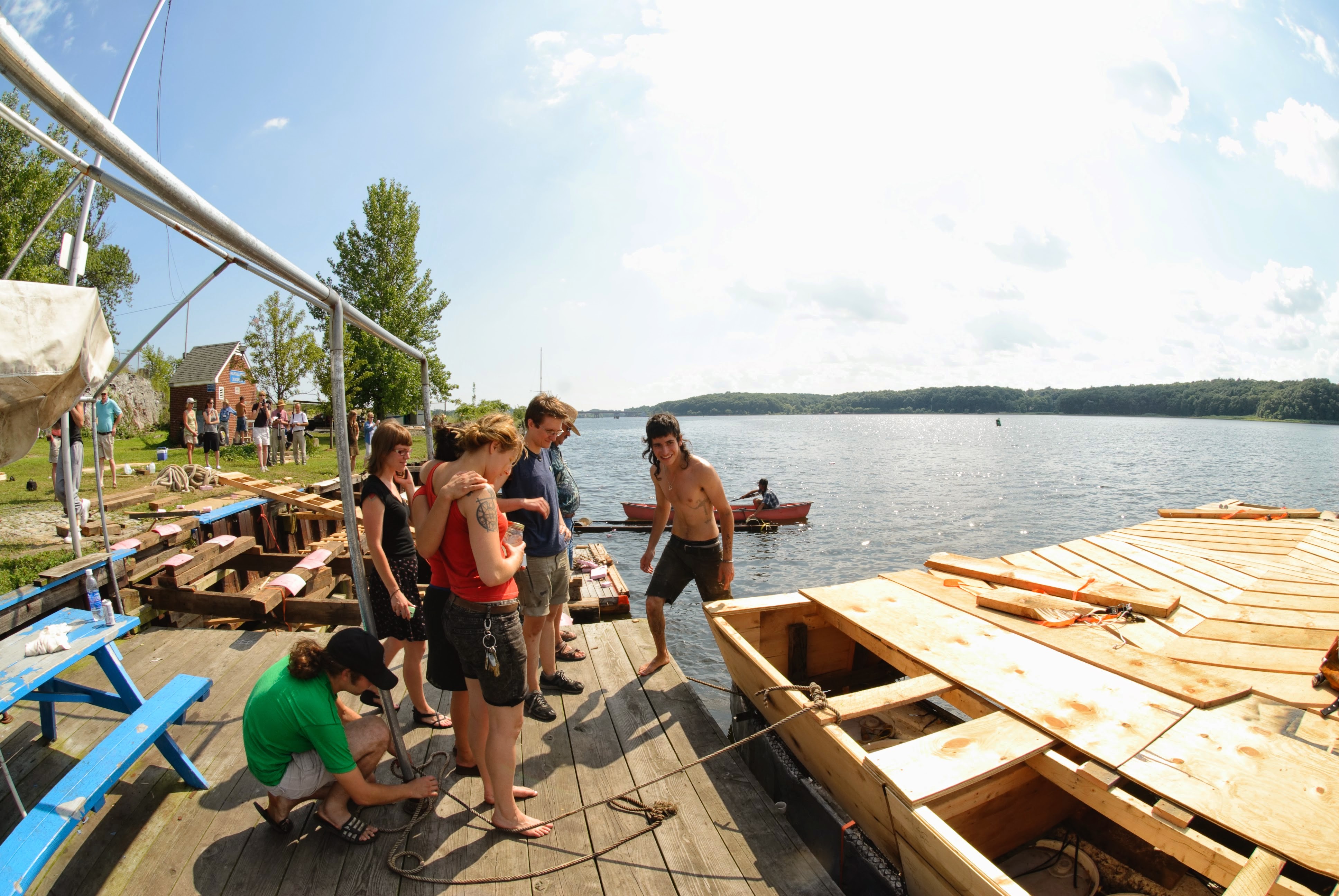


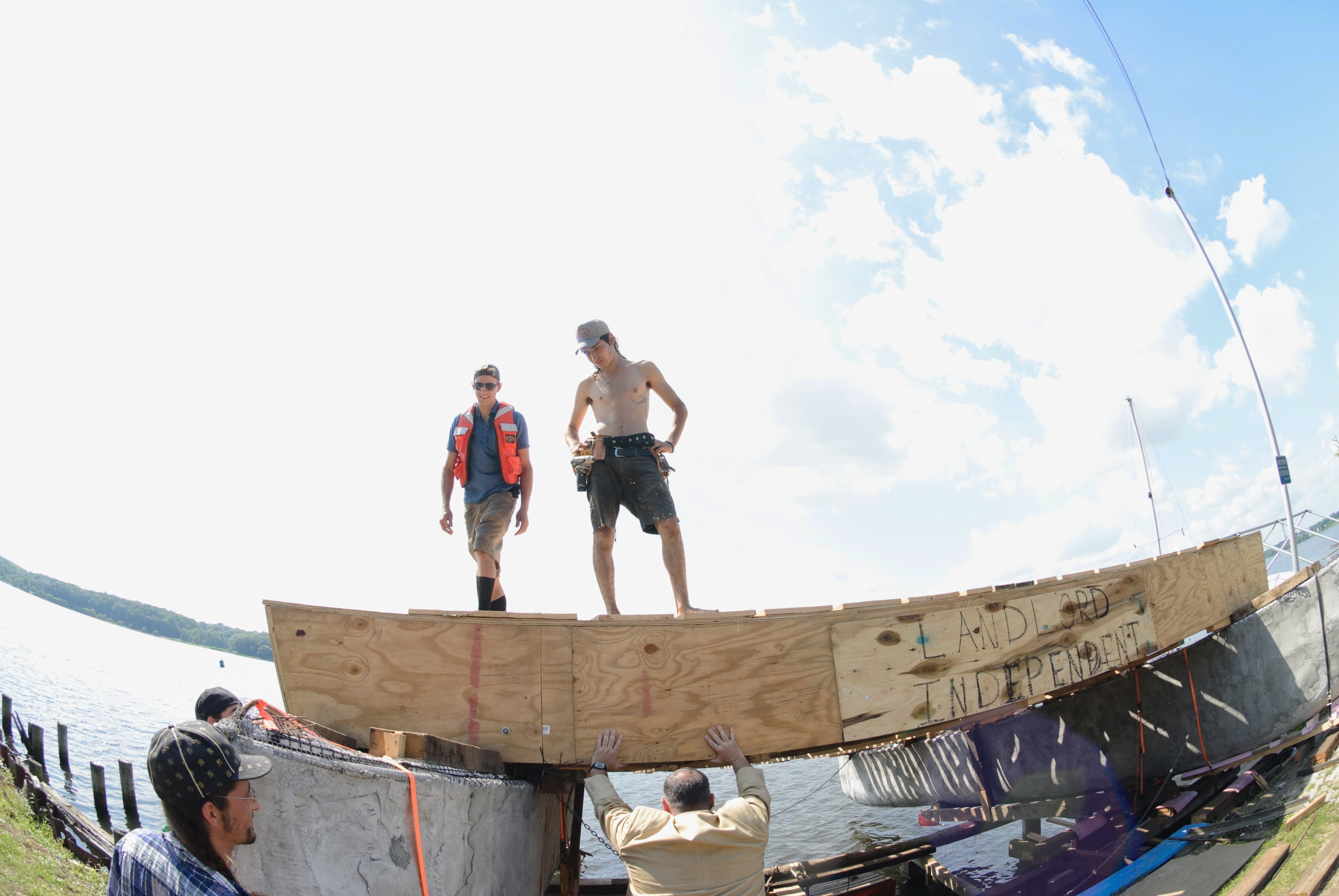





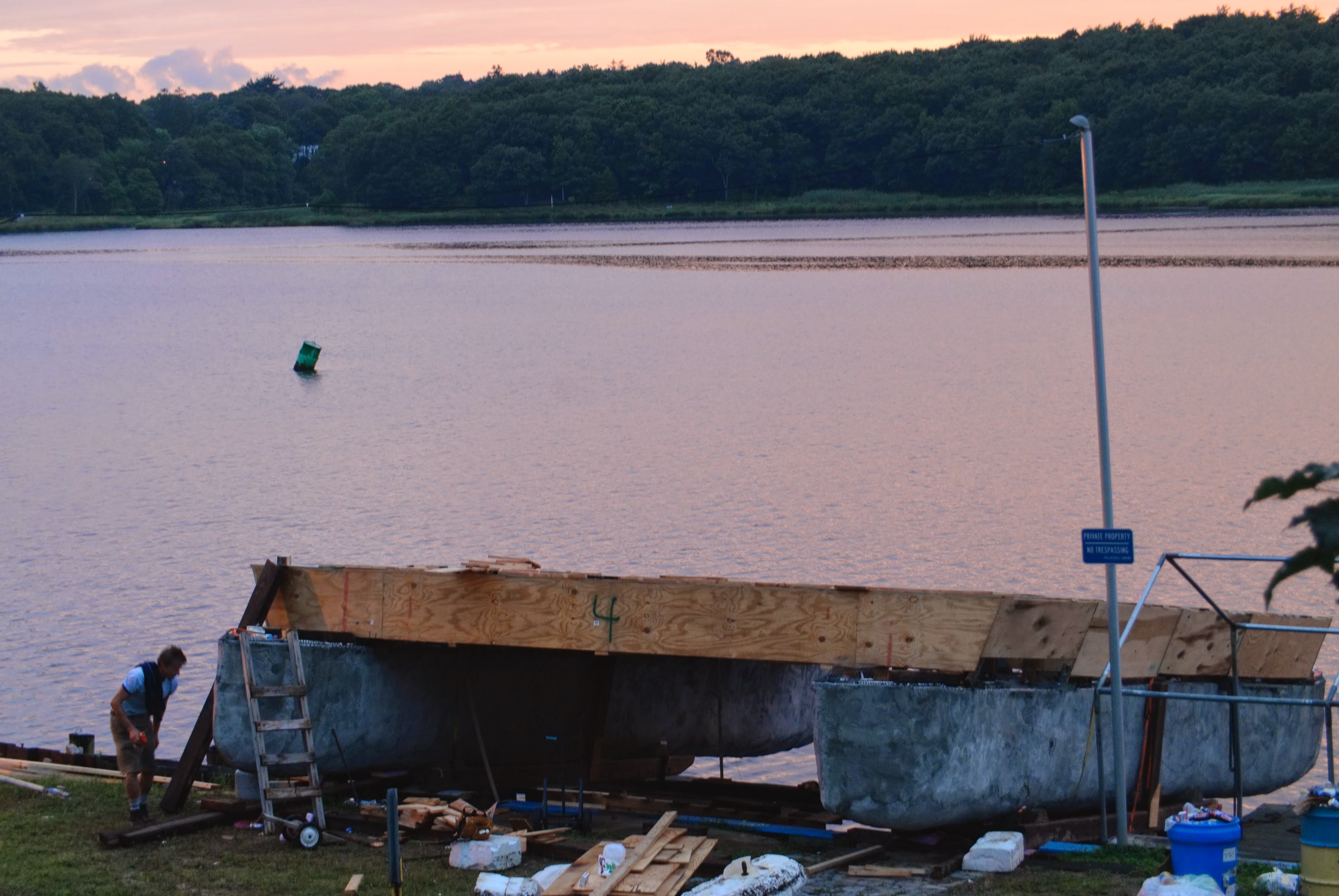

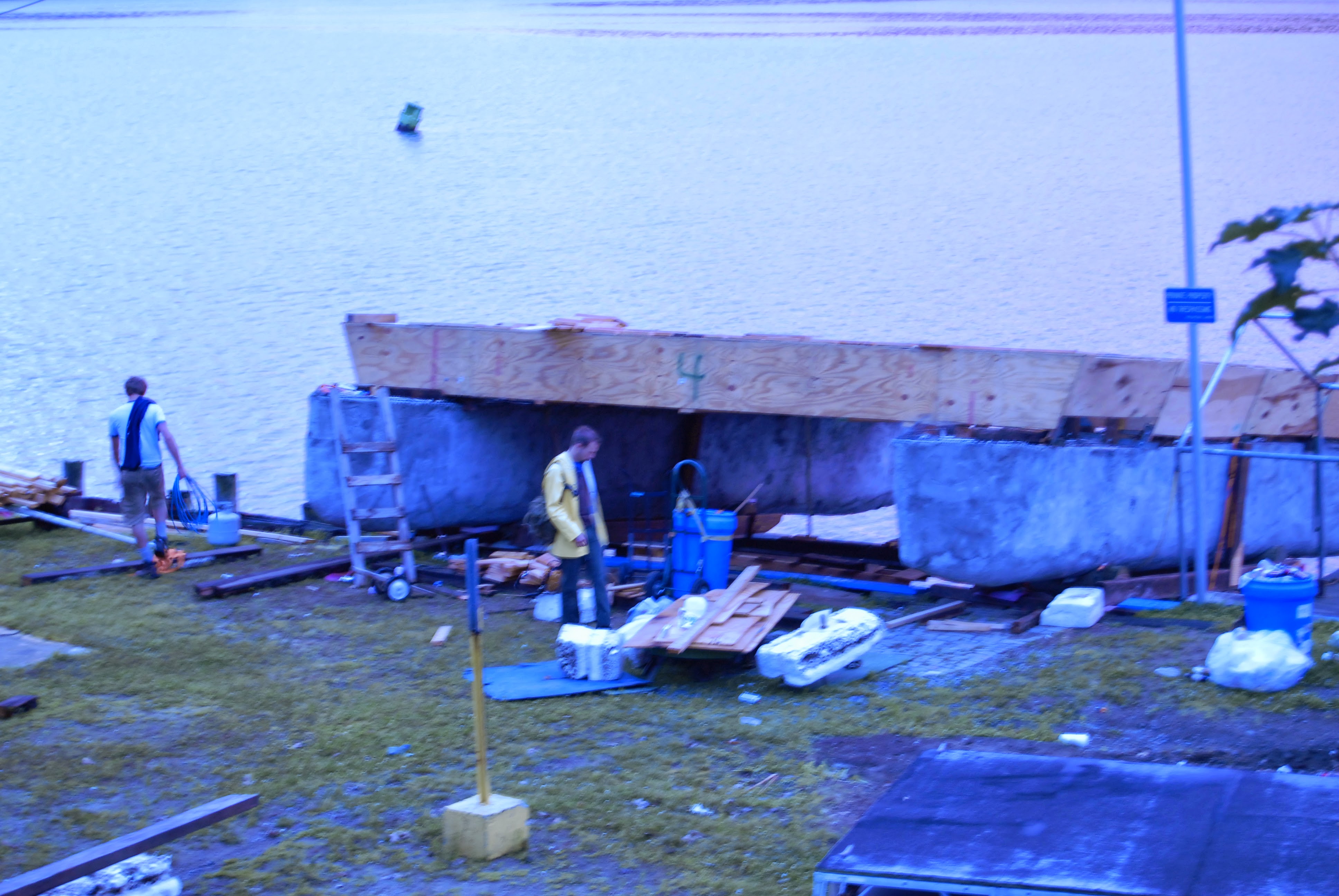
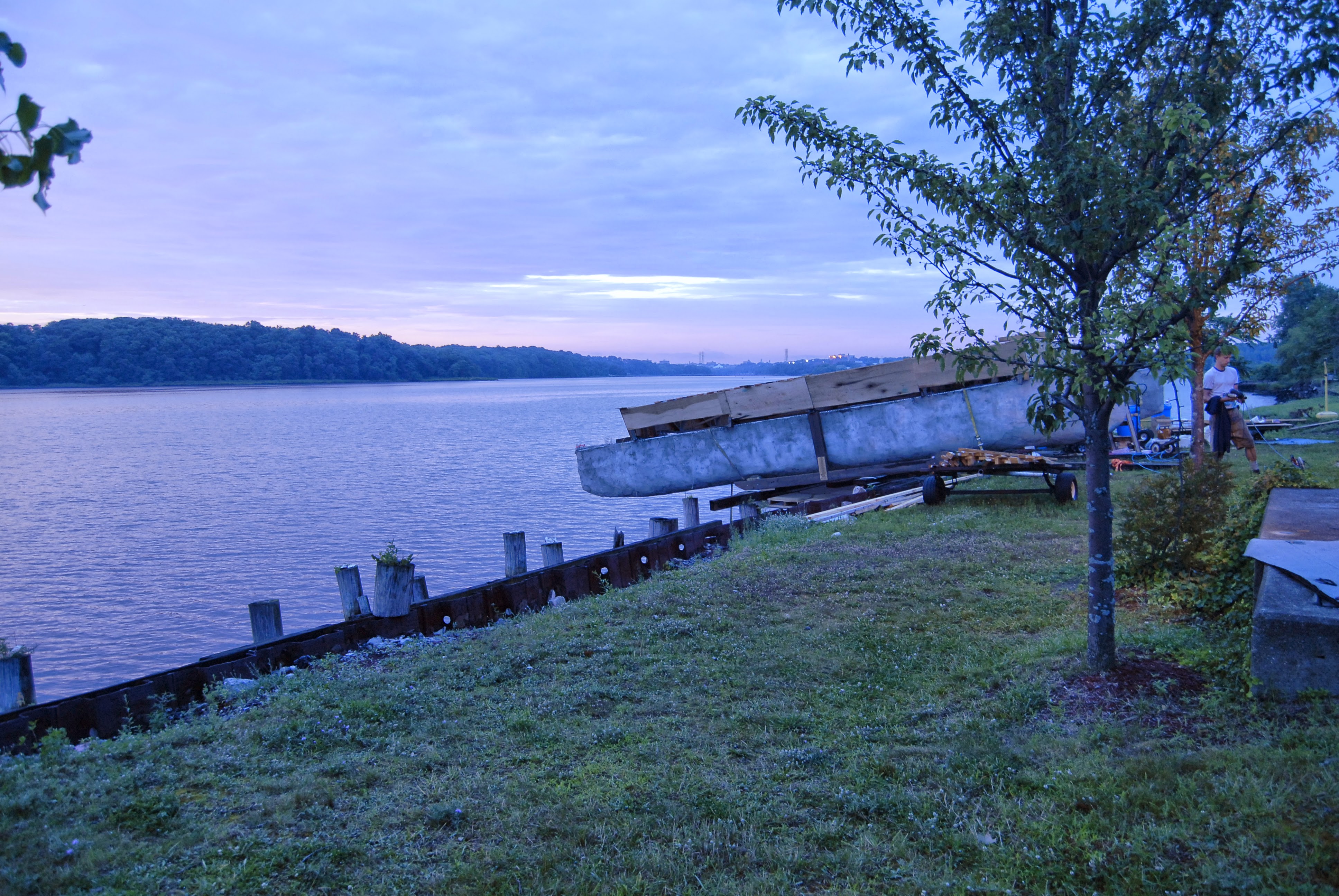




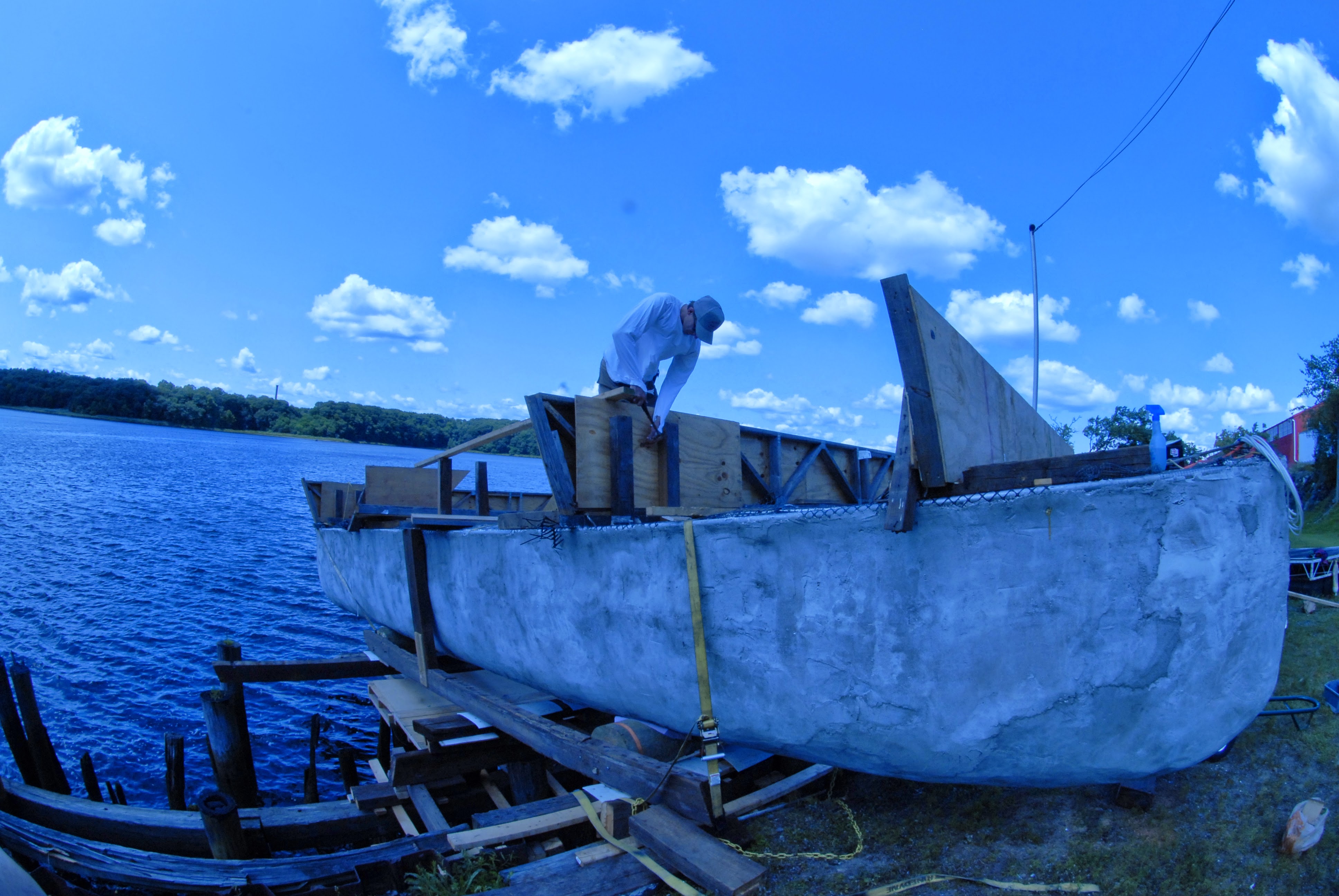

We used locally harvested and milled pine to build the boat’s 20x40 foot deck.
Launching
The system that held pontoons during the deck construction was designed to double as a ramp for the boat’s launch. With a crowd of family, friends, and reporters in attendance, we launched the boat into the Narragansett Bay.
Propulsion
A transom was constructed for the vessel’s 85HP outboard motor. A pulley system was built so the motor could be controlled by a bicycle steering wheel above the deck.
Constructing the Ponotoons








































Pontoon materials
Two local businesses donated the materials for this phase: 32 polyethylene barrels from a pharmaceutical company and 800 cubic feet of dock foam from a nearby marina.
Shaping the pontoons
The internal structure and external shaping of the pontoons was completed inside our warehouse space. Once the pontoons were prepared for a skim coat of concrete, they were moved to an outside construction site. Roughly 20 people were required to lift each pontoon.
Skim coating in concrete
A custom mix of Portland cement, sand, and plastic aggregate was used to for an abrasion resistant coating. Once completed, bottles, jacks, and pulleys were used to carefully rotate the pontoons for transportation.
Transport from Construction Area to Launch Site
A truck axle was used to move these one-ton pontoons from the initial construction area to the waterfront. Unused dock pilings were utilized to build a system that held pontoons in a square position.
In the News
- “Boat Livin'” The College Hill Independent
- “Weathering the Storm” The Providence Journal
- “They're Floating an Idea for Sustainable Living” The Providence Journal
- “On the Water and Off the Grid” The Providene Phoenix
- “Makers of Sustainable Vessel Fight to Dock in Providence” Rhode Island Public Radio